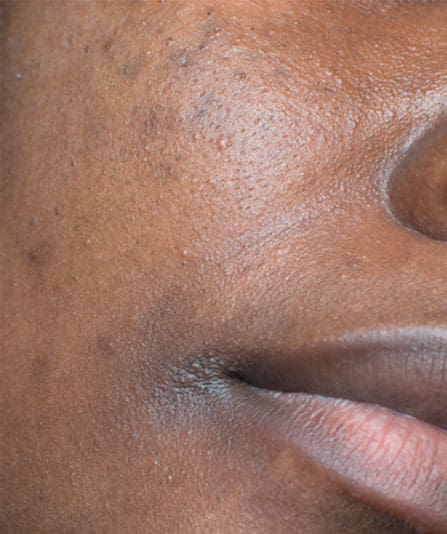Scars by Mr Ioannis Goutos
Dark Scars

Scars form as part of the skin healing process following an injury, cut or burn. In order to restore the integrity of the tissues, the skin enters a regenerative mode whereby new connective tissue and skin cells are laid down. This results in the formation of a scar. In ideal conditions, the scar formed is closely matched with the surrounding skin in colour, texture and level, hence it is not particularly noticeable. However, in some instances, the scar may not match so well with the original skin characteristics. For example, if there are excessive or insufficient connective tissues laid down, the scar may appear pitted or raised from the skin. Additionally, sometimes scars can appear significantly darker than the original skin tone, which is medically referred to as ‘hyperpigmentation’.
This can occur in the primary formation of the scar itself, or the scar tissue may darken overtime, causing it to appear more conspicuous. Having darker and more obvious scarring can make some individuals feel very self-conscious, particularly if this occurs on commonly visible areas of the body, such as the face, neck, hands, arms and legs.
Mr Ioannis Goutos is a highly qualified plastic surgeon and leading expert in the field of scars and burns management. He has extensive experience in assessing and managing a wide range of troublesome scarring, and offers a number of surgical and non-surgical cosmetic procedures.
Mr Goutos takes particular pride in providing tailored treatment for each individual, based on their skin type, background and treatment goals. He ensures that all relevant aspects are addressed in each care plan, including physical, social and psychological factors that are often associated with scarring.
Book your consultation today
Book nowAbout this condition
The most common cause of hyperpigmented scars is the production of additional pigment known as ‘melanin’ within the scar tissue. This may also be associated with other adverse features, such as the scar being raised (a hypertrophic or keloid scar) or depressed (most commonly in pitted scarring related to previous acne). Sometimes, the darker colour of the scar may be due to residual breakdown products of red blood cells within the skin.
Established scars may become darker with time, particularly if regularly exposed to direct sunlight. Similarly to normal skin, scar tissue will ‘tan’ or darken in response to background radiation. Scar tissue is often more sensitive to UV rays than normal skin, so may become darker, and more quickly.
A good way to prevent dark scars from occurring is by using sun protection, such as appropriate clothing or sun screen with a minimum 30SPF, particularly on recently healed wounds. Other methods of promoting good scar formation include keeping the wound clean, covered and well moisturised during healing.
There are a number of effective treatment options available for dark scars. Results will depend on if there are any other adverse features of the scar, such as texture, height or associated pain or itch. It is important to consider the original skin tone when selecting the best treatment, as some options can result in ‘hypopigmentation’ or lightening of the skin. Viable treatment options include:
- Needling or microneedling
- Q Switched Nd:YAG or Pico laser
- Intense pulsed light treatment (IPL)
- Topical treatments
These procedures can often be used in conjunction with other treatments depending on the individual’s symptoms and cosmetic goals. An experienced clinician should be able to guide you as to the best plan and treatments for you and your skin.

Testimonials
Mr Goutos is delighted to share some of his patient and peer feedback on their experiences of his services.











